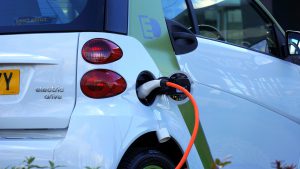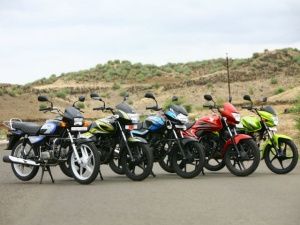e-XUV 300 to be launched in 4QFY23- Mahindra and Mahindra

Update on the Indian Equity Market:
On Wednesday, NIFTY closed in the red at 16,523 (-0.4%) dragged by BAJAJ-AUTO (-3.7%), APOLLOHOSP (-3.3%), and HINDALCO (-2.9%). JSWSTEEL (+3.6%), COALINDIA (+2.0%), and HDFCLIFE (+1.5%) were the top gainers. Among the sectoral indices, PSU BANK (+0.7%), BANK (+0.4%), and PRIVATE BANK (+0.3%) were the top gainers, and HEALTHCARE (-1.5%), IT (-1.4%), PHARMA (-1.3%) were the top losers.
Excerpts of an interview with Mr. Rajesh Jejurikar, Executive Director (ED), Mahindra and Mahindra published in Moneycontrol on 30th May 2022:
- The revenue market share for sports utility vehicles (SUVs) is back to the top position, the company is getting 9,000-10,000 bookings every month for the XUV 700. The recently launched XUV 700 has seen only 10-12 per cent cancellations despite a waiting period of 18-24 months.
- The Company has seen huge success in its XUV 700 Utility Vehicle and is not able to match the demand despite producing more than 5000 vehicles every month. The company plans to ramp up its production once supply issues subside.
- The Management believes the worst supply constraints are behind it. And that as the company ramps up the capacity with semiconductors supplies expected to improve further, the waiting period will come down.
- The Company announced the launch of Scorpio-N a new newer generation model of the classic Scorpio on 27th June marks the 20th anniversary of the first launch of Mahindra Scorpio in 2002.
- While commenting on the overall market situation, ED reiterated that some risks remain on the external environment front and supply has been disrupted due to lockdowns in China. ED, however, added that they expect to see “strong growth” in the auto business in FY23E.
- The company reported its highest-ever standalone revenue for auto and farm segments at Rs 553 bn for FY22 with April traction in tractors being strong, better than expectations. The farm equipment sector (FES) tractors market share for FY22 is at 40 per cent, up 1.8 per cent year on year with the highest ever farm export volume of 17,500 tractors in FY22.
- The management reiterated the company’s goal to reach an 18 per cent return on equity (RoE), adding that focus on capital allocation and improved financial metrics continue to deliver results.
- The Company is planning to launch the fully electric version of its XUV 300 SUV in the market in the first quarter of next year and is expected to unveil its electric vehicle business strategy, ‘Born Electric Vision’ of EV concept in Aug-22.
Asset Multiplier Comments
- Mahindra and Mahindra continue to cement its position as the market leader in the utility vehicles segment and with the expected launch of e-SUV, the company can better consolidate its leadership.
- The farm Equipment segment has been performing really well for the company, increased farm incomes due to government policy, and strong monsoon forecasts will augur well for the company’s demand in the medium term.
Consensus Estimates: (Source: market screener and investing.com website)
- The closing price of Mahindra and Mahindra was ₹ 1,047/- as of 01-June-2022. It traded at 16x/ 11x the consensus earnings estimate of ₹ 69/ 94 – for FY23E/FY24E respectively.
- The consensus target price of ₹ 1,150/- implies a P/E Multiple of 12x on the FY24E EPS estimate of ₹ 94/-.
Disclaimer: “The views expressed are for information purposes only. The information provided herein should not be considered as investment advice or research recommendation. The users should rely on their own research and analysis and should consult their own investment advisors to determine the merit, risks, and suitability of the information provided.”


